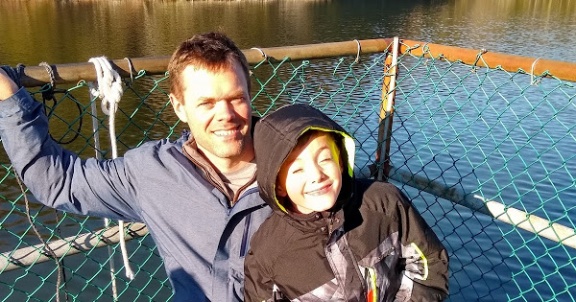This week our Spotlight series is taking a closer look at Matt Shotwell, PhD, Associate Professor of Biostatistics. Learn more about his research interests, hobbies and thoughts on adjusting the p-value for multiple comparison.
What are your research interests and what have been the major findings so far?
One of my research interests is the design and analysis of ‘challenge-response’ experiments in which a complex system is experimentally perturbed and its subsequent behavior is used to make inferences about the system’s inner workings. I am especially interested in designing this type of experiment such that the ‘response’ is maximally informative. In pharmacokinetic experiments - where participants are first administered a drug and its concentration is later measured in the blood - we have shown that ancillary perturbations that occur in the hospital setting, such as hemodialysis, can induce informative fluctuations in the blood concentration of drugs (Shotwell et al. 2016: https://www.tandfonline.com/doi/abs/10.1080/10543406.2015.1074918). Between 2013 and 2018, I served as principal investigator of a multi-institutional, NIH-funded research grant to study the optimal design of challenge-response experiments in cardiac electrophysiology (NIH-R01HL118392). We hope that the the findings of our work will reduce the resource (e.g., human, animal, and financial) burden of this type of experimental research.
Tell us us about any leadership positions, grants obtained, awards won, and/or committees you have served on.
I lead our department’s collaboration plan with the Department of Anesthesiology at Vanderbilt University Medical Center. Biostatisticians, Yaping Shi and Sarah Feng, also contribute substantially to this collaboration. Our team has had many opportunities to collaborate with anesthesiologists in a variety of basic and clinical research. From 2011 until 2017, I served as the Statistical Editor-in-chief for the peer-reviewed journal Regional Anesthesia and Pain Medicine, and I currently serve as an Associate Statistical Editor for the journal Anesthesia & Analgesia.
What was your draw to statistics and/or Vanderbilt?
I was drawn to statistics while studying in a graduate program in biology (specifically in environmental ecology). After earning a PhD in biostatistics from the Medical University of South Carolina, I was drawn to Vanderbilt’s Department of Biostatistics because of its balanced emphasis on methodological and collaborative work, and its focus on reproducible research and use of open-source software. I met Frank Harrell (then Chair of our department) at the useR 2010 conference, where I promised to help organize useR 2012 at Vanderbilt. I did, and I stayed!
What is your best advice for aspiring statisticians?
It’s cliché, but I advise students (of statistics or any field) to find a research topic that has potential impact in an area that is important to them, e.g., difficult-to-treat disease or climate change. Having worked as a biostatistician for nearly a decade, I’ve found it much easier to stay motivated to work on projects that are meaningful to me outside of statistics.
What are your thoughts on controversial statistical topics such as adjusting the p-value for multiple comparison, the choice between Bayesian, likelihood, or frequentists, ethical issues, etc.?
Unjustified adjustment for multiple comparisons is one of my ‘pet-peeves’. Adjustment to control a familywise type-I error probability (i.e., adjustment for multiple comparisons) should not be done unless there is strong justification for a familywise hypothesis, e.g., in a sequential clinical trial.
Tell us about your life outside of Vanderbilt. What about your hobbies? Do you have a significant other? Children?
Outside of my work at Vanderbilt, I occasionally provide independent consulting services. I have worked on a variety of external projects, including economic distress research and civil litigation (as an expert witness)! I love the the outdoors, camping, hiking, cycling, jogging, and skiing. I have two sons Evan and Luke, daughter Avery, and my wife Mary is also a PhD statistician!
Finally, what is something about you that most people at Vanderbilt still don't know about you?
I have maintained a blog (more or less ‘active’) at https://biostatmatt.com for more than 10 years! I enjoy writing on technical topics including statistics, electronics, and computer programming. I occasionally write about my kids or outdoor adventures.
